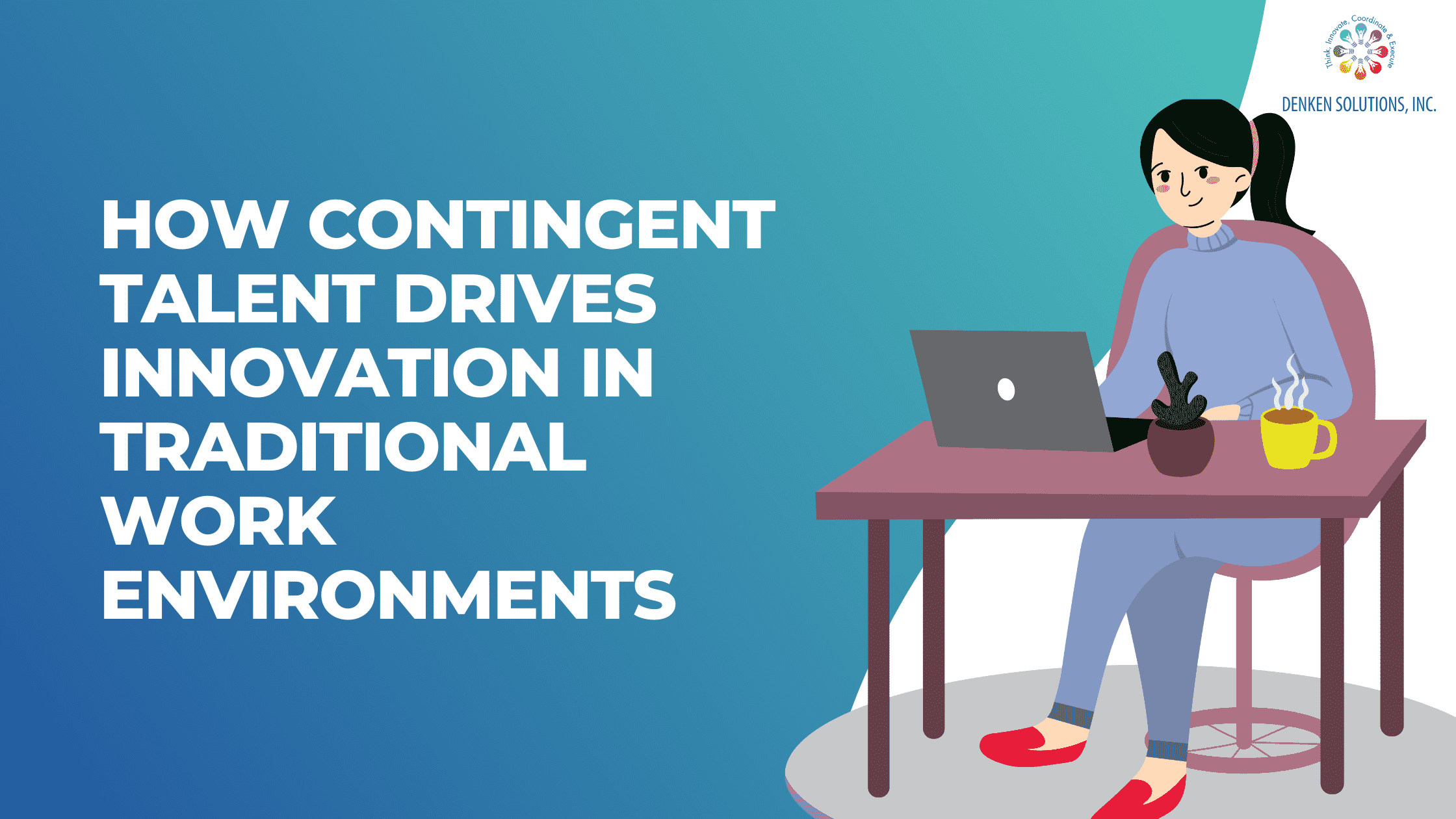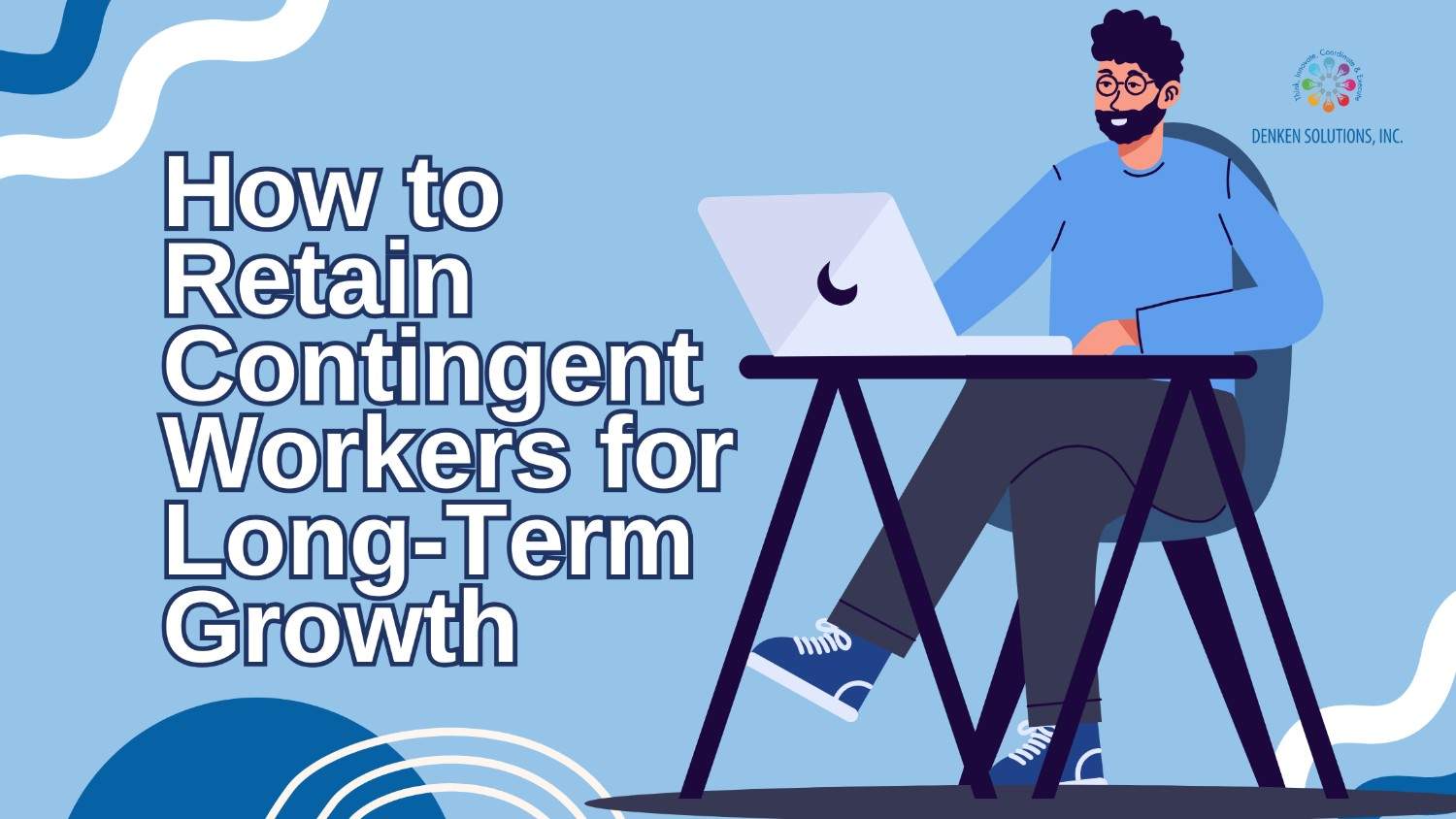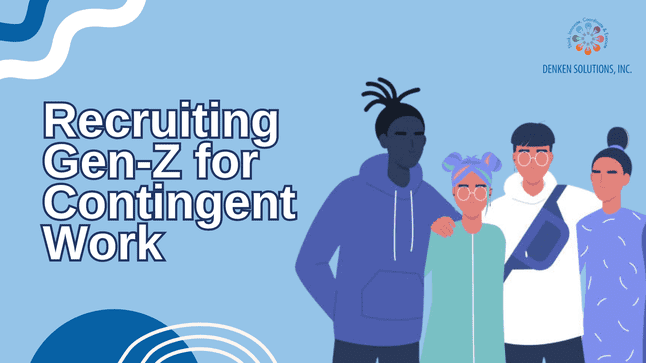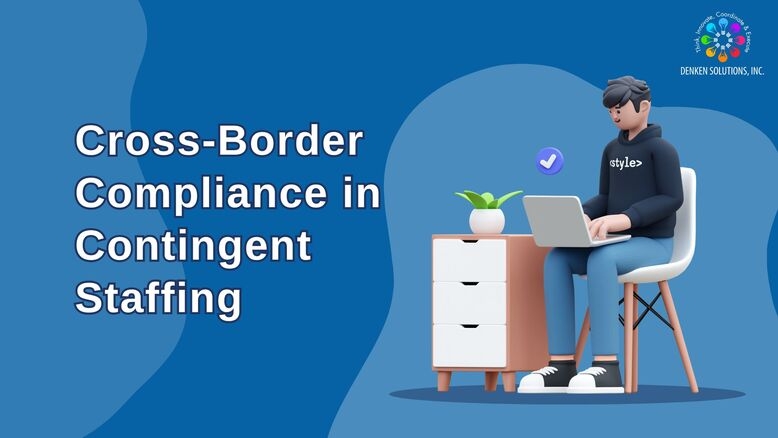In the current world where innovation is primary, many traditional businesses are struggling to keep up with the changes. Even in cases where there is a strong desire to innovate, legacy systems, inflexible hierarchies, and risk-averse cultures frequently impede change.
Freelance experts, contract-based professionals, and consultants tend to bring special skills, a mindset that’s built for agility, and external perspectives. These candidates are not just “temporary” hires; they are becoming a major reason for drivers of innovation.
Even the most conventional work environments can benefit from contingent talent’s ability to speed up digital transformation and bring new ideas to outdated procedures. We examine how this flexible labor model is changing traditional sectors in this blog, as well as how businesses may make use of their contingent workforce’s impact.
Understanding the gap in traditional workforces
While traditional work environments often accompany stability and well-established processes, they usually fall short when it comes to certain aspects, such as innovation. These gaps are increasingly becoming visible as technologies are advancing, markets are evolving, and customer expectations are shifting faster than the internal team can respond. Some of the key limitations that are holding traditional workforces are:
-
Outdated processes and legacy systems:
Many established businesses are still relying on existing technologies and workflows that were not designed for agility. These systems often get quite costly to upgrade, difficult to integrate, and most importantly, resistant to experimentation, therefore making innovation very slow and a painful process.
-
Slow decision-making:
Departmental maps, risk-averse leadership, and many levels of approvals frequently affect the growth of the company. Even minor modifications in typical organizational structures must be navigated through management, which affects the quick execution required for innovation.
-
Severe internal bias:
Employees who worked within the same system for many years are known to struggle to think differently. Innovation will provide fresh perspectives in teams; however, traditional teams are often limited because of company norms, internal echo chambers, and past experiences.
-
Emerging technological skill gaps:
Many firms lack internal expertise in the emerging fields of data science, artificial intelligence, automation, and digital-first consumer experiences. While project deadlines are fast, internal team upskilling takes time.
-
Full-time staff are being overloaded:
Innovation tends to get sidelined when full-time employees are caught up in daily operations. Without any extra capacity or special support, there is very little room for testing, exploring, and trying out any new ideas.
It is evident from these disparities that traditional workforces, despite their experience and dependability, require reinforcement to remain competitive. Contingent workforce jobs may fill this gap by bringing in speed, expertise, and an innovative approach.
How does contingent talent spark innovation?
Contingent talent includes freelancers, consultants, independent contractors, and gig workers. They are no longer employed by businesses to fill the temporary staffing gaps. For various traditional businesses, these candidates are now becoming the bridge to real and changing innovation.
-
Accompanying fresh perspectives:
Contingent professionals will often come from multiple backgrounds and industries. Since these professionals are not a part of the company culture, they can easily spot inefficiencies, challenge outdated norms, and also suggest new ideas that the internal teams tend to overlook.
-
They inject in-demand skills into the existing team:
Companies could need a professional who is an expert in AI, data visualization, or even customer journey mapping. In these situations, waiting for months to hire or train someone internally would not be possible. In such cases, contingent talent will allow the businesses to tap into special skill sets quickly. This quick access to critical capabilities will give companies an edge in terms of strategy and growth.
-
Promotes agility in the business:
Innovation through contingent staffing builds on rapid growth. However, traditional structures will discourage risk-taking within the business. Contingent workers, especially those who are hired for certain innovation-related projects, can easily focus on testing, prototyping, and optimizing without being dragged down by internal politics or legacy workflows.
-
Reduces the time required for innovation:
Hiring a full-time professional could take various months. Contingent talent can be employed within days, therefore allowing projects to move ahead without any delay. Irrespective of whether businesses are targeting a new digital service or reimagining customer support, these professionals will help compress innovation cycles.
-
Transferring skills across the organization:
Multiple contingent workers have experience across numerous industries or companies. As a result, they act as organic knowledge bridges, contributing perspectives from other fields, instruments, or technology that may lead to innovations in your own.
-
Enhances cross-functional collaborations:
When teams are divided, innovation frequently stalls. Contingent professionals, particularly consultants or project-based hires, can act as cross-functional linkages, bridging the gap between product development and marketing or coordinating IT implementation with business objectives.
To put it briefly, contingent talent creates bridges rather than merely filling gaps. Businesses can integrate agility, creativity, and state-of-the-art knowledge into their core operations by integrating innovation-driven professionals into conventional frameworks.
Building the right contingent talent strategy
Hiring contingent talent is not just about filling any temporary roles; it is more about building an innovation-ready and flexible workforce that aligns with the business goals. However, to unlock the full potential of contingent workers, businesses will need a clear and well-executed strategy. This is how businesses can build a contingent talent strategy that delivers long-term value.
-
Starting with strategic workforce planning:
Before starting the hiring process, assess where the contingent talent will fit into the broader organizational goals. Businesses can ask themselves questions such as:
- Where do we need speed and agility?
- Which role will require short-term expertise or a niche?
- What internal skill gaps are slowing innovation?
Businesses can use the above insights to list out the when, where, and why to bring in external professionals.
-
Identify the high-impact and low-risk projects:
Businesses should keep in mind that contingent talent is ideal for:
- Digital transformation pilots
- System migrations
- Market expansion research
- Short-term strategy consulting
- Data automation and analytics
Select initiatives with quantifiable outcomes and time constraints for collaboration; they frequently gain the most from outside experience.
-
Blend the contingent and the core teams:
Businesses should avoid isolating contingent workers. For the primary impact:
- Include them in current teams with defined responsibilities and expectations.
- Engage them in brainstorming or important meetings.
- Promote information exchange between contract and full-time employees.
A hybrid team will promote team collaboration while also encouraging flexibility.
-
Ensure classification and compliance:
One of the biggest risks with a contingent talent is misclassification. Businesses should make sure they:
- Distinguish between freelancers, employees, and contractors
- Stay compliant with the local labor and tax laws
- Use an Employer of Record (EOR) to manage the international payroll, benefits, and contracts.
This will protect the business from fines, legal headaches, and audits while also giving you a global reach.
-
Keep optimizing and measuring continuously:
Businesses should avoid treating contingent hiring as a one-time employment. They should track:
- Cost vs impact
- Innovation outcomes
- Collaboration success and team feedback
- Productivity
Using this data, businesses can refine future hiring and expand on what is working.
An effective contingent talent strategy is proactive rather than reactive. When implemented properly, it frees your company from the constraint of permanent staffing and enables it to operate more efficiently, innovate continuously, and move more quickly.
Challenges and how to overcome them:
Integrating contingent talent into traditional work could initiate innovation; however, it also comes with tons of challenges. Companies tend to face hurdles such as aligning temporary workers with long-term goals, maintaining consistent communication, and managing cross-functional collaboration. Some of the challenges and solutions are:
-
Access to skilled talent on demand:
Reach out to our carefully chosen network of knowledgeable developers, data specialists, business analysts, and project managers who are prepared to step in when you need them most.
-
Tailored workforce solutions for business requirements:
We assist you in creating innovative hybrid teams that combine full-time and contingent workers according to your objectives, schedule, and technology stack.
-
Complete support for the talent lifecycle:
Denken Solutions manages the entire talent journey, from sourcing and screening to onboarding and performance monitoring, so your staff remains goal-oriented.
-
A compliance-first strategy in the U.S.:
To reduce your risk and legal exposure, we make sure all contingent recruits are appropriately classified, onboarded, and managed in compliance with US labor regulations.
-
Quick hiring without sacrifice:
With pre-screened experts who offer the agility and mentality required to spur true innovation in conventional settings, we shorten your time to hire.
-
Scalable enterprise innovation project solutions:
We offer contingent professionals to help you expand quickly and intelligently, whether you’re starting an AI program, digitizing legacy systems, or piloting a new procedure.
How does Denken Solutions drive success with contingent talent?
At Denken Solutions, we know the value of contingent talent in driving innovation within traditional work environments. Our expertise lies in connecting businesses with the right contingent talent who bring special skills, fresh perspectives, and agility to the team. We make the process simple by managing all the aspects of compliance, onboarding, and hiring, thus ensuring seamless integration of contingent workers into the existing teams.
Our platform streamlines communications, fosters communication, and ensures that both contingent and full-time employees are aligned with the business objectives. By offering tailored solutions, we assist businesses in harnessing the full potential of contingent talent to enhance productivity, spark innovation, and meet the demands of today’s markets.
Conclusion:
Innovation in a business does not always come from within. In the current fast-changing businesses, the traditional environment will need much more than just internal resources to stay competitive. They also need agility, thinking, and special expertise. This is exactly what a contingent talent will deliver.
Adding highly qualified consultants, freelancers, and contractors to your staff gives you access to state-of-the-art skills without requiring long-term commitments. More significantly, you give your company the speed and perspective it needs to question the current quo and promote significant change.
Maximizing this potential calls for more than just hiring; it also calls for a well-thought-out plan, reliable partners, and appropriate systems.



